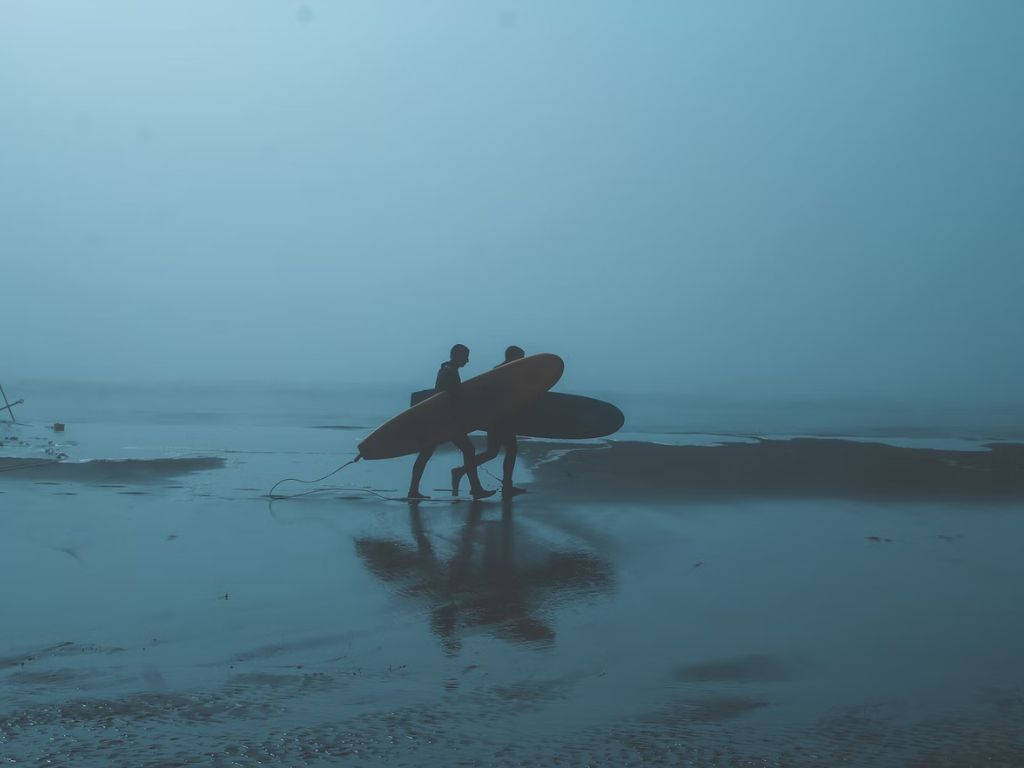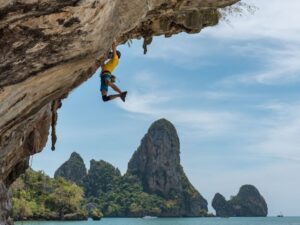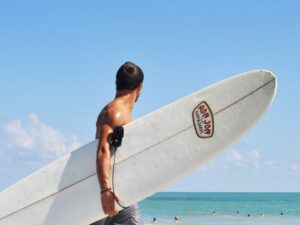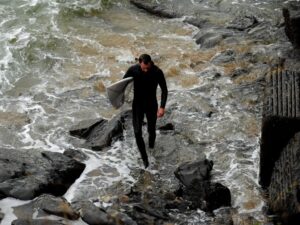Pichilemu is called the surfer’s paradise for a good reason. It’s a hidden gem tucked away on the central coast of Chile. As a passionate surfer, I can attest to this charming town’s incredible waves and laid-back vibe.
The coastal town has quickly become a popular destination for surfers worldwide but still maintains its authentic Chilean charm. My first time surfing here was a transformative experience. The powerful waves and stunning views of the Pacific Ocean left me in awe.
From that moment on, I knew I had to return. Over the years, I’ve explored the local surf spots, met friendly locals and discovered Pichilemu’s unique culture and history.
Whether you’re a beginner or an experienced surfer, this town has something to offer everyone.
So pack your bags, grab your board, and dive into the ultimate surfer’s guide to Pichilemu, Chile!
1. What is the best time to surf in Pichilemu?
| Seasons | Summer (Dec-Feb) | Autumn (Mar-May) | Winter (Jun-Aug) | Spring (Sep-Nov) |
| Air Temp | 70-80°F | 60-70°F | 50-60°F | 60-70°F |
| Water Temp | 62-68°F | 55-60°F | 52-58°F | 57-62°F |
| Swell Size | 4-8 ft | 4-6 ft | 6-10 ft | 4-8 ft |
| Swell Direction | S-SW | S-SE | S-SW | S-SW |
| Swell Consistency | Regular | Regular | Regular | Regular |
| Wind Force | 10-15 mph | 5-10 mph | 10-20 mph | 5-10 mph |
| Wind Direction | S-SW | S-SE | S-SW | S-SW |
| Crowd | Moderate | Light to Moderate | Moderate to Heavy | Light to Moderate |
| Difficulty Level | Intermediate | Beginner to Intermediate | Intermediate to Advanced | Beginner to Intermediate |
The best time to surf in Pichilemu is during the winter months between May and September. It’s when the waves are bigger and more consistent. However, you may want to visit between December and February if you prefer smaller waves and warmer water.
Weather patterns and wave conditions vary yearly, so it’s always a good idea to check the local surf forecast before planning your trip.
2. Best Surf Spots in Pichilemu!
With its long coastline and consistent waves, Pichilemu is a surfer’s paradise. Here’s a guide to the main surf spots in the area. But first, an insider tip from a veteran. To find the best waves, it’s important to monitor the conditions.
The best waves in Pichilemu typically have a swell from the south or southwest and a low to mid tide. Punta de Lobos is the most famous surf spot in the area, but it can get crowded during peak season.
El Infiernillo, on the other hand, is a great spot for beginners, but it can get crowded on weekends. If you’re looking for a quieter spot, try La Puntilla or other breaks in the area.
| Surf Spot | Location | How to Reach | Wave Type | Difficulty Level | Best Conditions |
| Punta de Lobos | 6 km southwest of Pichilemu | Car or taxi | Point break | Intermediate to advanced | Mid to high tide, southwest swell |
| El Infiernillo | 3 km northwest of Pichilemu | Car or bike | Beach break | Beginner to intermediate | Mid to high tide, northwest swell |
| La Puntilla | Pichilemu city center | Walking distance | Beach break | Beginner to intermediate | Mid to high tide, northwest swell |
| Playa Hermosa | 3 km south of Pichilemu | Car or bike | Beach break | Beginner to intermediate | Mid to high tide, south swell |
| Las Terrazas | 7 km south of Pichilemu | Car or bike | Point break | Intermediate to advanced | Mid to high tide, southwest swell |
| Infernillo rivermouth | 5 km northwest of Pichilemu | Car or bike | Beach break | Beginner to intermediate | Mid to high tide, northwest swell |
A. Punta de Lobos
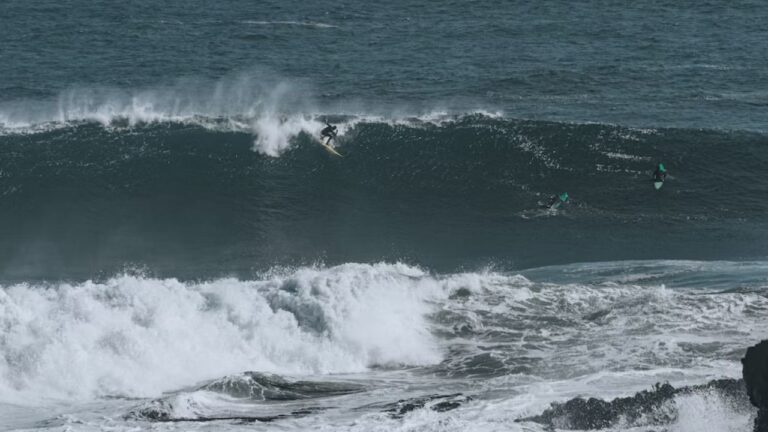
Punta de Lobos is Pichilemu’s most famous surf spot and one of the best in Chile. The point break wave can produce long, hollow barrels perfect for experienced surfers. The wave can be challenging and requires much skill and experience to surf.
The best conditions are with a swell from the south or southwest, and the wave is best at low to mid-tide. The break is about 6 kilometers south of Pichilemu and accessible by car or bike.
B. El Infiernillo
El Infiernillo is a beach break located just north of Punta de Lobos. It’s a more beginner-friendly spot that can produce fun, mellow waves. The break is best at low to mid tide and can get crowded on weekends.
The best time to surf here is during the winter, from June to September, and the best conditions are with west or northwest swell and southeast wind.
C. La Puntilla
La Puntilla is a river mouth break located in the town of Pichilemu. It’s a fun, mellow wave perfect for beginners or longboarders. The break is best at mid to high tide and can get crowded during peak season.
The wave breaks over a sandy bottom and is best at mid to high tide. The break can get crowded during peak season, but it’s a great spot to catch some fun waves.
The best time to surf here is during the summer, from December to March, and the best conditions are with a south swell and southwest wind.
D. El Claron
Located just north of Punta de Lobos, El Claron is a great spot for intermediate to advanced surfers looking for powerful waves. The break here is fast and hollow, with left and right-hand waves reaching up to 10 feet in height.
The best time to surf here is during the winter, from June to September, and the best conditions are with west or northwest swell and southeast wind.
E. La Boca
Located near the river mouth, it’s a good spot for beginners or those looking for smaller waves. The break here is gentle and forgiving, with left and right-hand waves ideal for longboarding or cruising.
The best time to surf here is during the summer, from December to March, and the best conditions are with a south swell and southwest wind.
3. How to reach Pichilemu?
First, let’s talk about airports. The closest international airport to Pichilemu is Santiago International Airport, which is approximately a 3.5-hour drive away. You can rent a car, take a bus, or hire a private transfer to Pichilemu.
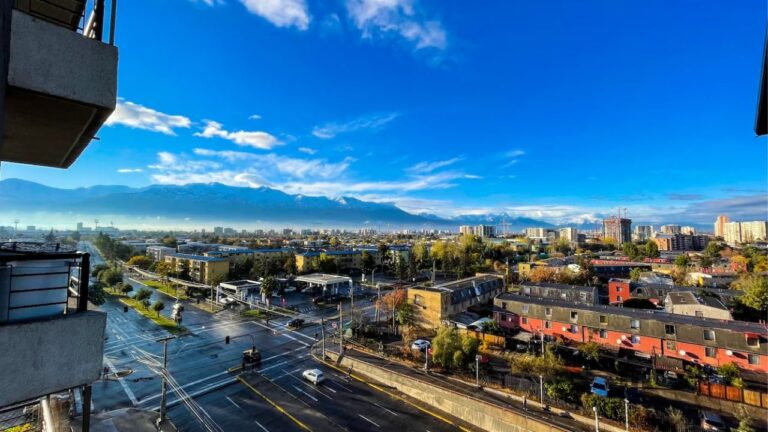
I recommend renting a car as it’ll allow you to explore the area and check out the different surf spots. If traveling with a surfboard, you must ensure your rental car can accommodate it.
Pro Tip: Most rental car companies in Chile offer roof racks, or you can rent a car with an installed surfboard rack. However, checking with the rental company beforehand is always a good idea to avoid surprises.
Another option is to take a bus from Santiago to Pichilemu. This option is more affordable but can be a hassle, especially if traveling with a surfboard.
Most bus companies require that you pack your surfboard in a bag, which can be challenging if you have a larger board. Additionally, the bus schedules can be unreliable, so plan accordingly.
From my personal experience, I would rent a car. The first time I traveled to Pichilemu, I took the bus from Santiago. I had a 6’6” surfboard with me and struggled to fit it into the bag that I had brought.
4. Surf Shops and Rentals in Pichilemu
If you need to get your gear or want to upgrade, several surf shops and rentals in the area can help. Here are my recommendations for the best places to rent or buy surf gear in Pichilemu.
A. Surf Shops
Pichisurf: This is the oldest surf shop in Pichilemu and a must-visit for anyone looking for a wide range of surf gear.
They offer surfboards, wetsuits, leashes, wax, and everything you need to hit the waves. The friendly and knowledgeable staff can help you choose the right equipment.
WetLife: This is another great option for surf gear in Pichilemu. They have a good selection of surfboards, wetsuits, and accessories.
The staff is helpful and can advise what equipment is best for you. They also offer surf lessons and guided tours of the surf spots in the area.
Maresia: This is a newer surf shop in Pichilemu, but they’ve quickly become a favorite among locals and tourists alike.
They offer a good selection of surfboards, wetsuits, clothing, and accessories. The staff is friendly and can offer advice on surf spots and conditions.
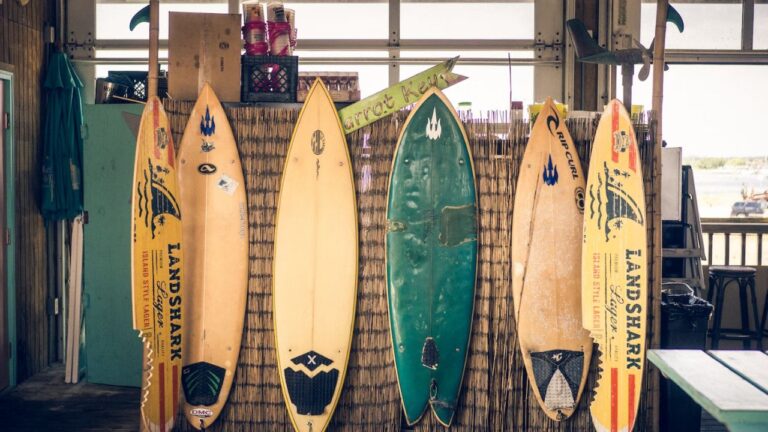
B. Rentals
Escuela Pichilemu Surf: Renting is a great option if you’re just starting or want to avoid traveling with your gear.
They offer surfboard and wetsuit rentals, surf lessons, and guided tours. They have a good selection of beginner and intermediate boards, shortboards, and longboards.
Pichilemu Surf Rentals: This is another great option for surf gear rentals in Pichilemu. They have a good selection of surfboards, wetsuits, leashes, wax, and other accessories.
5. Accommodations and Food
This town offers a variety of options for accommodations and food, ranging from budget-friendly to luxurious and from local to international cuisine.
A. Suitable Accommodations in Pichilemu
You have various accommodation options, from hostels and campsites to guesthouses and luxury hotels.
One of the most popular options for surfers is to stay in a hostel or guesthouse, which is affordable and provides a great opportunity to meet other surfers and make new friends.
Some of the most popular options for hostels and guesthouses in Pichilemu include Pichilemu Surf Hostel, Inalafquen Hostel, and Pichilemu Backpackers.
If you’re looking for a more luxurious option, Pichilemu has some beautiful hotels and resorts. Hotel Alaia is a popular choice among surfers, just steps away from Punta de Lobos and offering a range of luxurious amenities such as a pool, spa, and restaurant.
Another great option is the Hotel Casa Pichilemu, a charming boutique hotel in the heart of Pichilemu, featuring unique rooms and a rooftop terrace with stunning ocean views.
B. Where to eat and try local cuisine in Pichilemu?
Being a coastal town, seafood is a staple in the local cuisine, with fresh catches of the day being served in many of the town’s restaurants. Pichilemu’s most popular seafood dishes include ceviche, chupe de mariscos (seafood stew), and locos (a type of Chilean abalone).
Plenty of other options are also available if you’re not into seafood. Chilean cuisine is heavily influenced by Spanish and indigenous traditions, with dishes such as empanadas, asado (barbecue), and pastel de choclo (a corn and meat pie) being popular choices.
Additionally, there are several international cuisine options in Pichilemu, such as Italian, Mexican, and Thai.
Some popular restaurants to check out in Pichilemu include La Terraza del Pacifico, located right on the beach and serving up delicious seafood dishes, and Cafe Montt, a cozy cafe in the heart of town serving up tasty breakfast and lunch options.
Here are some recommended shops and restaurants in Pichilemu where surfers can enjoy the local cuisine:
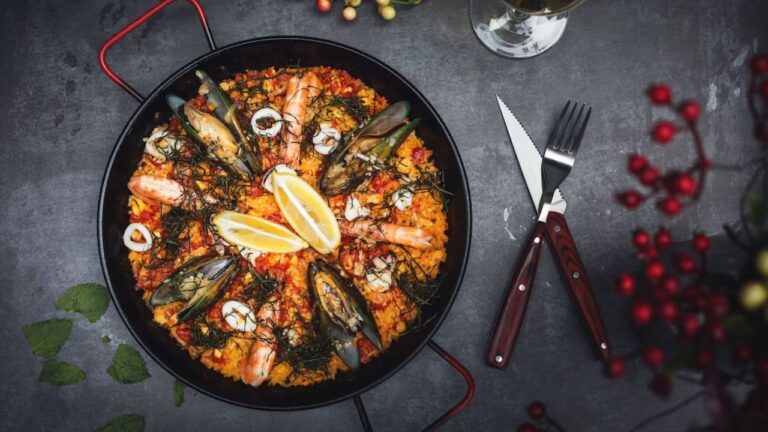
La Loba Restaurant (Cost: $15-20 per person)
Located on the beach, La Loba is a popular restaurant among surfers. They offer delicious seafood dishes, such as ceviche and grilled fish, and local favorites, like empanadas and pastel de choclo.
La Terraza Restaurant (Cost: $15-20 per person)
Another beachfront restaurant, La Terraza, is known for its fresh and flavorful food. Their menu features a mix of Chilean and international dishes, but their seafood options are particularly good. Be sure to try their chupe de mariscos (seafood stew).
Pulpo’s Restaurant (Cost: $10-15 per person)
This laid-back restaurant is a favorite among locals and tourists alike. They offer a variety of dishes, including seafood, pizza, and pasta. Their seafood dishes, especially the pulpo a la parilla (grilled octopus), are highly recommended.
Punto Cero Cafe (Cost: $5-10 per person)
Punto Cero is a great option if you’re looking for a quick bite or a cup of coffee. They offer sandwiches, salads, and pastries, along with a variety of hot and cold drinks. The average cost of dining here is around $5-10 per person.
El Chiringuito (Cost: $10-15 per person)
This beachfront bar and restaurant is a popular spot for drinks and snacks after a long day of surfing. They offer a variety of cocktails and beers, along with small plates like nachos and ceviche.
6. Other Activities in Pichilemu
Pichilemu is a coastal town in Chile famous for its excellent surf breaks. However, there’s much more to this town than just surfing. There are plenty of options if you’re looking for some non-surfing activities in Pichilemu.
Here are some of my recommendations for non-surfing activities:
Take a horseback ride along the beach:
The town has plenty of stables offering guided tours. The tours take you along the beach, through forests, and over hills, offering some breathtaking views of the surrounding areas.
Do some yoga around nature:
Pichilemu is home to some excellent yoga studios offering classes for all levels. Some studios offer outdoor classes, providing a unique experience.
Explore the local wineries:
Chile is famous for its wine, and Pichilemu is no exception. There are plenty of vineyards around Pichilemu that offer tours and wine tastings. You can taste some of Chile’s best wines while taking in the stunning views of the countryside.
If you’re in a coastal town, go catch some fish:
A popular activity in any coastal town, with plenty of opportunities to catch some great fish. You can go fishing on the beach or boat to sea. There are plenty of fishing charters available, and some offer overnight trips.
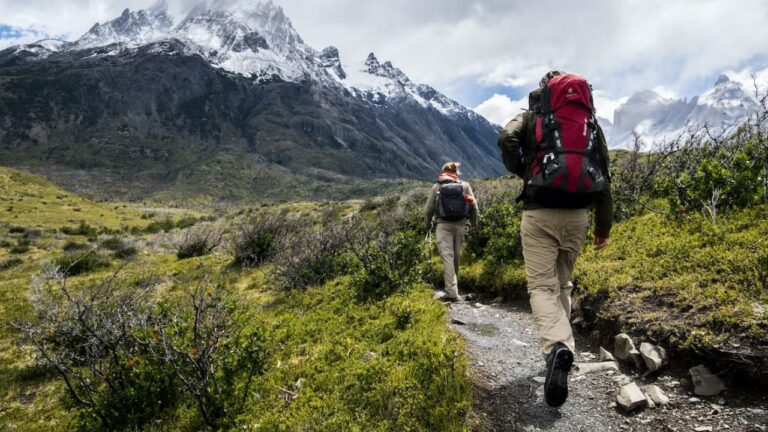
Go hiking in the beautiful forests:
Pichilemu is surrounded by hills and forests, offering plenty of hiking opportunities. The area has excellent hiking trails, ranging from easy walks to more challenging treks.
Visit the Pichilemu downtown and Market:
Pichilemu’s downtown is a charming mix of old and new architecture. The town’s central square, Plaza Arturo Prat, is a great place to explore.
Here you will find the town’s church, built in the early 20th century, and the local market, where you can buy fresh produce and seafood.
Visit the local museums:
Pichilemu has several museums that offer insight into the town’s history and culture. One of the most interesting is the Museo Mapuche de Ruka Kimvn Taiñ Volil, which showcases the Mapuche culture, one of the indigenous peoples of Chile.
Another museum worth visiting is the Museo de Colchagua, which displays exhibits related to the region’s history and culture.
7. Safety Tips for Surfing in Pichilemu
If you’re planning to surf in Pichilemu, it’s important to remember some safety tips to ensure you have a fun and safe experience in the water. Here are some things to remember:
A. Tips on staying safe while surfing.
- Know your limits: Pichilemu can have some pretty big waves, and it’s important to know your ability level before you paddle out.
- Surf with a buddy: Always surf with a friend, or better yet, a local guide who knows the area and can give tips on where to surf and avoid.
- Stay hydrated: Surfing can be exhausting, especially in the hot Chilean sun. Be sure to stay hydrated.
- Wear sunscreen: Wear a high-SPF sunscreen to protect your skin from the sun’s harmful rays.
B. Information on local hazards and how to avoid them.
- Rip currents: Pichilemu is known for its strong rip currents, which can quickly pull even experienced surfers out to sea. Always swim parallel to the shore if you feel pulled out to sea to avoid getting caught in a rip current.
- Rocks and reefs: Some surf breaks in Pichilemu are located near rocks and reefs, which can be dangerous if you’re not careful. Be sure to scout the area beforehand.
- Marine life: Although rare, it’s possible to encounter marine life, such as jellyfish, stingrays, and sharks.
C. Tips for respecting the local surf culture.
- Respect the locals: Pichilemu has a tight-knit surf community; respecting the locals and their customs is important. Always be courteous in the water, and never drop in on someone else’s wave.
- Leave no trace: Always clean up after yourself. Don’t litter, and be sure to dispose of any trash properly.
- Learn about the local history and culture: Pichilemu has a rich history and culture. Taking the time to learn about it can help you better understand and appreciate the area.
By following these safety tips and respecting the local surf culture, you can have a safe and enjoyable surfing experience in Pichilemu.
Expert QnA
Q. What kind of waves can I expect in Pichilemu?
Pichilemu is known for having various waves catering to surfers of different skill levels. Pichilemu’s most famous surf spot is Punta de Lobos, which offers consistent, world-class waves that break both left and right. Other spots, such as El Infiernillo and La Puntilla, provide more suitable waves for intermediate to advanced surfers.
Overall, you can expect to find a mix of beach, point, and reef breaks in Pichilemu, with waves ranging from small and mellow to large and powerful depending on the time of year and weather conditions.
Q. What are some local food dishes to try in Pichilemu?
Chile is known for its delicious and fresh seafood.
Some local dishes that you should try in Pichilemu are ceviche, a refreshing and tangy seafood salad marinated in lime juice and spices; machas a la parmesana, a dish made with razor clams and parmesan cheese; and mariscal (Comida), a seafood soup made with fish, shrimp, and clams.
Other popular dishes include empanadas, a savory pastry filled with meat, cheese, or vegetables, and chorrillana, a hearty dish made with french fries, beef, eggs, and onions. Don’t forget to try local wines or pisco sours, a traditional Chilean cocktail made with pisco brandy, lime juice, and sugar.
Q. Is Pichilemu beginner-friendly for surfing?
Pichilemu has a variety of surf spots suitable for beginners. Some spots offer mellow waves with forgiving breaks, while others offer consistent small waves perfect for learning. A lesson with a local surf school is recommended to ensure safety and the proper instruction.
Q. What is the weather like in Pichilemu throughout the year?
Pichilemu generally has a temperate climate with mild temperatures throughout the year. The warmest months are December through February, with temperatures averaging around 68-75°F, and the coolest months are June through August, with temperatures averaging around 55-60°F.
The area is known for its strong winds, affecting wave conditions and making the water feel colder.

